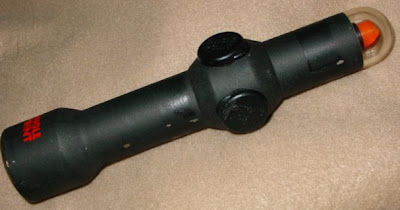What's practical about it?
After writing a previous post I got to thinking about the wider implications of strategy in self defense. A few principles stand out as generally useful, which are to take cover in the best ensconced position you can find, achieve the best probability of hitting that you can, and exploit the element of surprise. I previously wrote about these things in a piece about the shotgun but they apply to any firearm. For example, if a pistol is what you are using, you should get behind some cover and shoot with as much precision as you can under the circumstances. Quite often, maximum efficiency in firing is going to mean using a field rest firing position--it's a good idea if you can do it, and you usually can if you have taken cover. You shoot over or around the cover, bracing your aim against it.
These concepts don't get enough of a workout in courses of fire that are shot in the "practical" matches popular these days. Self defense in the real world is not an assault course; the "run and gun" approach is not well suited to most purely defensive questions. That is not a criticism of practical matches, for they test certain shooter attributes both well and thoroughly. But do such contests test the right abilities? Do they instead reinforce the wrong habits? If what you are after is simply to survive an attack by felons, perhaps the courses should place less emphasis on "run," more on ensconcement and efficiency in one place.
As a citizen defending your home, or seeking to survive a street brew-up, it would seem that the strategic value of cover, and of maximum efficiency in firing from cover, are the matters that should take precedence, rather than moving around all the time and shooting in the open.
Practical matches are too well received to be challenged on their merits, but perhaps we could work up some additional drills or maybe even some side matches that are more practical than practical shooting attempts to be.


Comments
Post a Comment